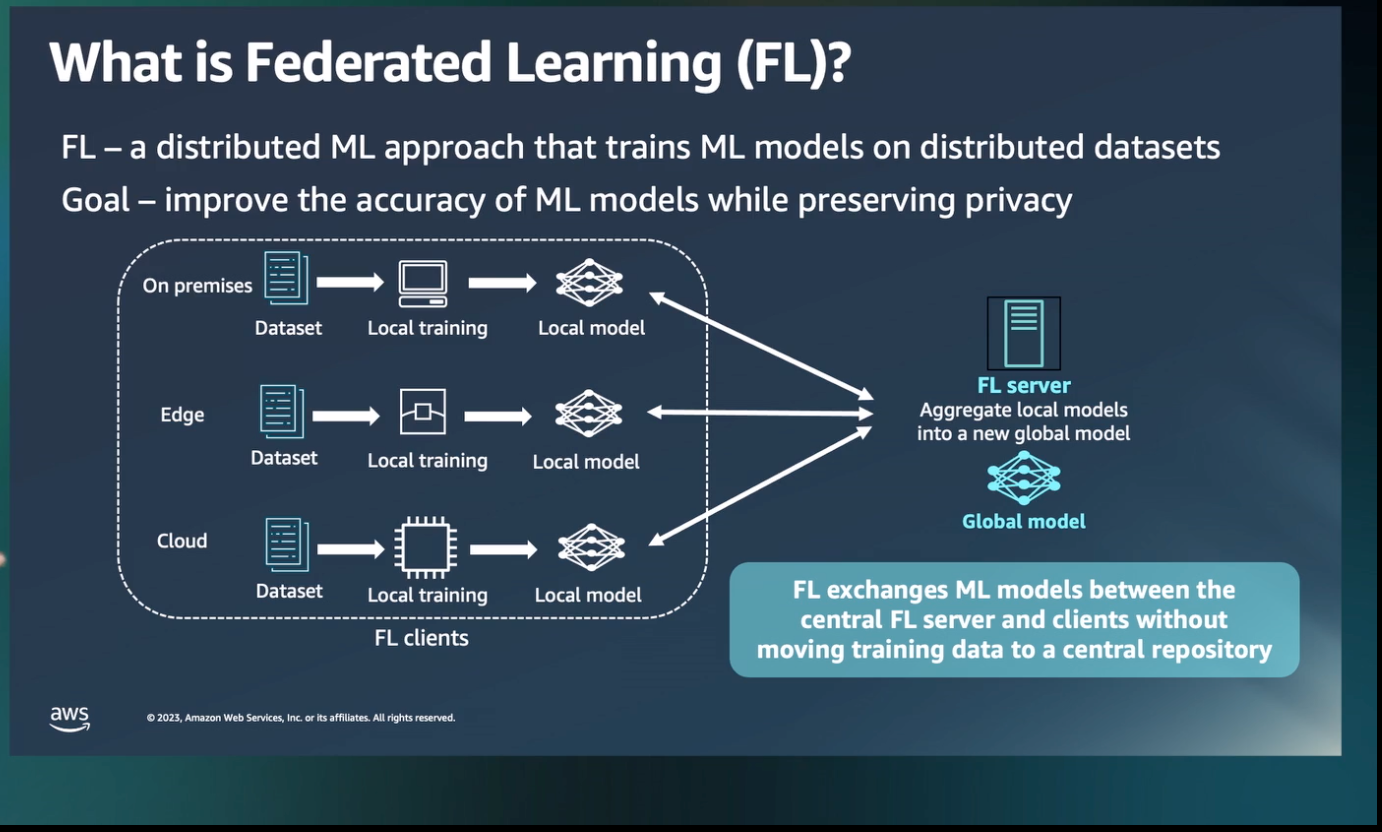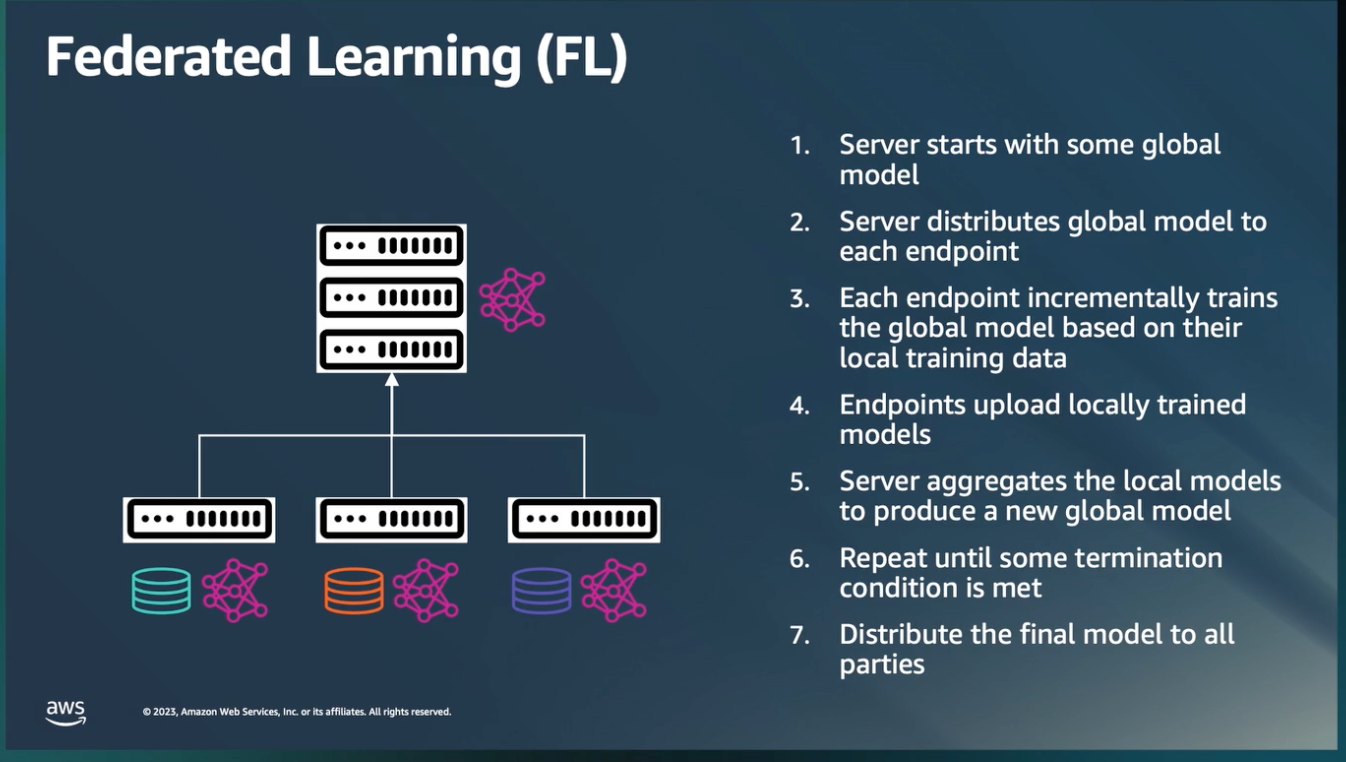
Amazon SageMaker is a fully-managed service that provides developers and data scientists with the ability to build, train, and deploy machine learning models in the cloud. It is part of Amazon Web Services (AWS) and is designed to simplify the process of building, training, and deploying machine learning models.
SageMaker provides a number of pre-built machine learning algorithms and frameworks that can be used to build models, as well as the ability to bring your own custom code and libraries. With SageMaker, you can easily train your models on large datasets, automatically scale your resources to match your needs, and deploy your models in production.
The basic workflow in SageMaker involves the following steps:
- Data preparation: Before building a machine learning model, you need to prepare your data. SageMaker provides a number of tools for this, including data cleaning, preprocessing, and feature engineering.
- Model training: Once your data is prepared, you can use SageMaker to train your machine learning model. SageMaker provides pre-built machine learning algorithms and frameworks, such as XGBoost, TensorFlow, and PyTorch, that can be used to train your model.
- Model tuning: Once your model is trained, you can use SageMaker to tune it by adjusting hyperparameters to improve its performance.
- Model deployment: After your model is trained and tuned, you can use SageMaker to deploy it in production. SageMaker provides several options for deploying models, including hosted endpoints, containerized endpoints, and AWS Lambda functions.
- Model management: Once your model is in production, you can use SageMaker to monitor its performance and make updates as necessary. You can also use SageMaker to manage the versions of your models and to roll back to a previous version if necessary.
SageMaker makes it easy to build and deploy machine learning models in the cloud, providing an end-to-end solution for data scientists and developers. With its pre-built algorithms and frameworks, as well as the ability to bring your own custom code and libraries, SageMaker offers a flexible and powerful platform for building and deploying machine learning models.

Federal learning, also known as federated learning, is a machine learning technique that allows multiple parties to collaboratively train a shared model without sharing their data with each other. In traditional machine learning, data is usually collected and processed in a central location, where a single model is trained on the entire dataset. However, in many situations, this centralized approach is not feasible due to regulatory, security, or privacy concerns.
With federal learning, each party trains a local model on their own data and shares only the model updates (in the form of gradients) with a central server. The central server aggregates the model updates and sends back an updated model to each party. This process is repeated iteratively until the shared model converges into a solution.
Federal learning offers several advantages over traditional machine learning. First, it allows multiple parties to collaborate on training a shared model while preserving the privacy and security of their data. This is particularly important in industries such as healthcare, finance, and government, where data privacy is a top priority. Second, it can reduce the amount of data that needs to be transferred over the network, which can save time and bandwidth. Third, it can lead to more accurate models, as it allows the model to be trained on a more diverse set of data.
However, federal learning also has some challenges. One of the main challenges is ensuring that the model updates are consistent and can be aggregated effectively. Another challenge is dealing with imbalanced data across the different parties. These challenges require careful design of the federated learning system and the choice of appropriate algorithms and techniques.
Overall, federal learning is an exciting area of research and has the potential to enable collaborative machine learning in a variety of industries while preserving data privacy and security.

You can find out more about AWS innovation for Machine Learning here
You can read my other published documents may help you to gain quick knowledge about a topic before dive into the deep :)



No comments:
Post a Comment